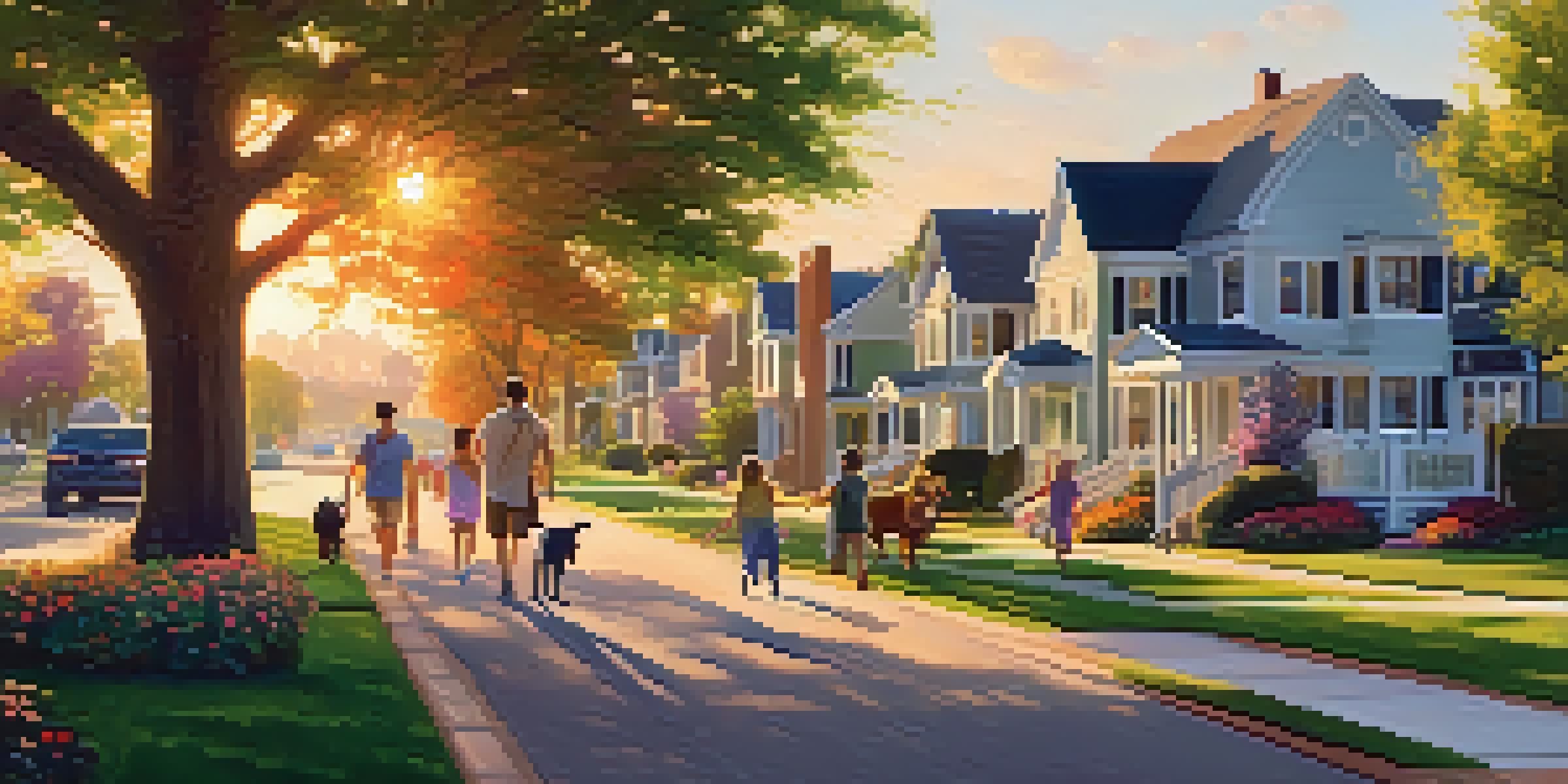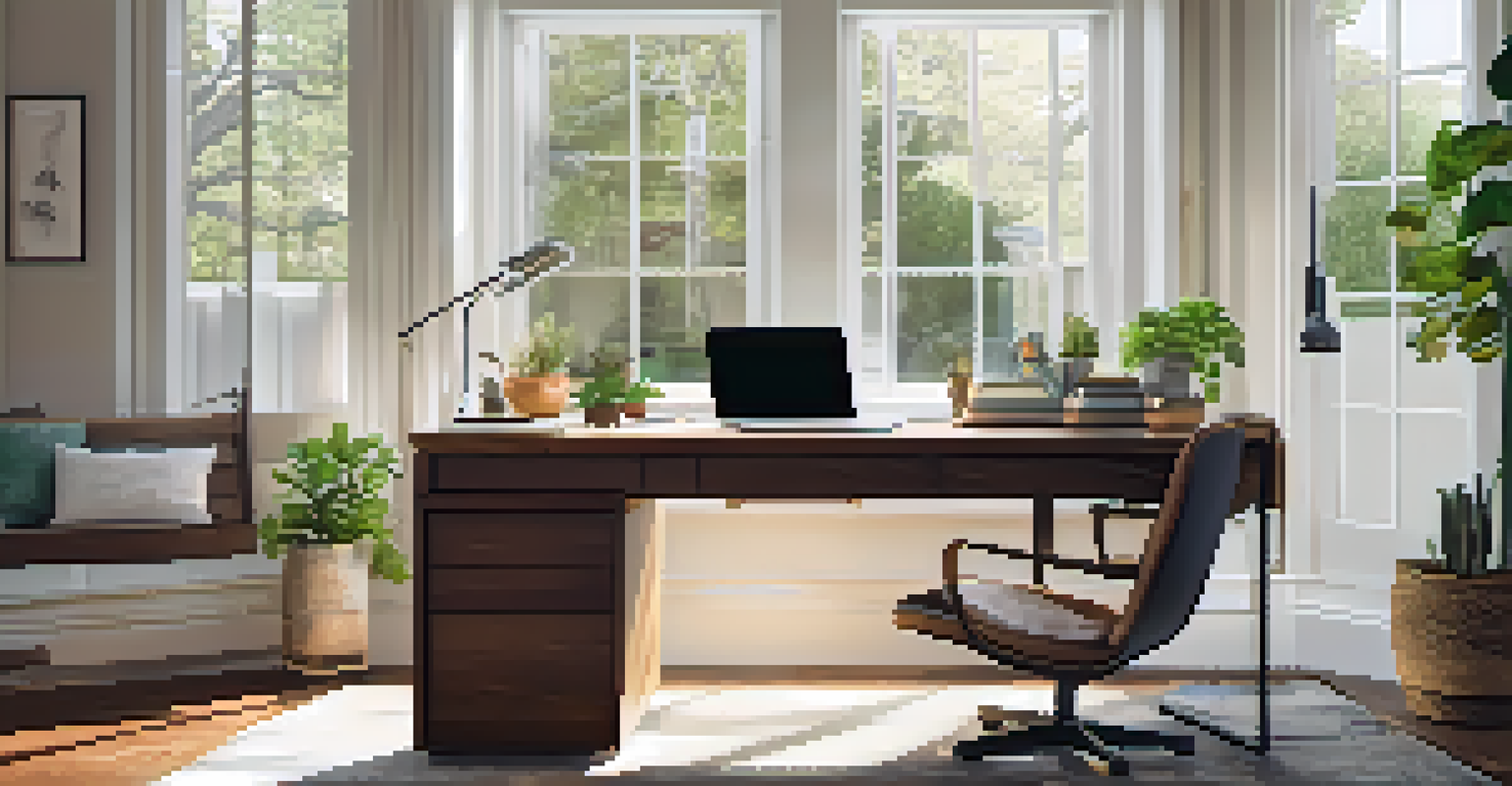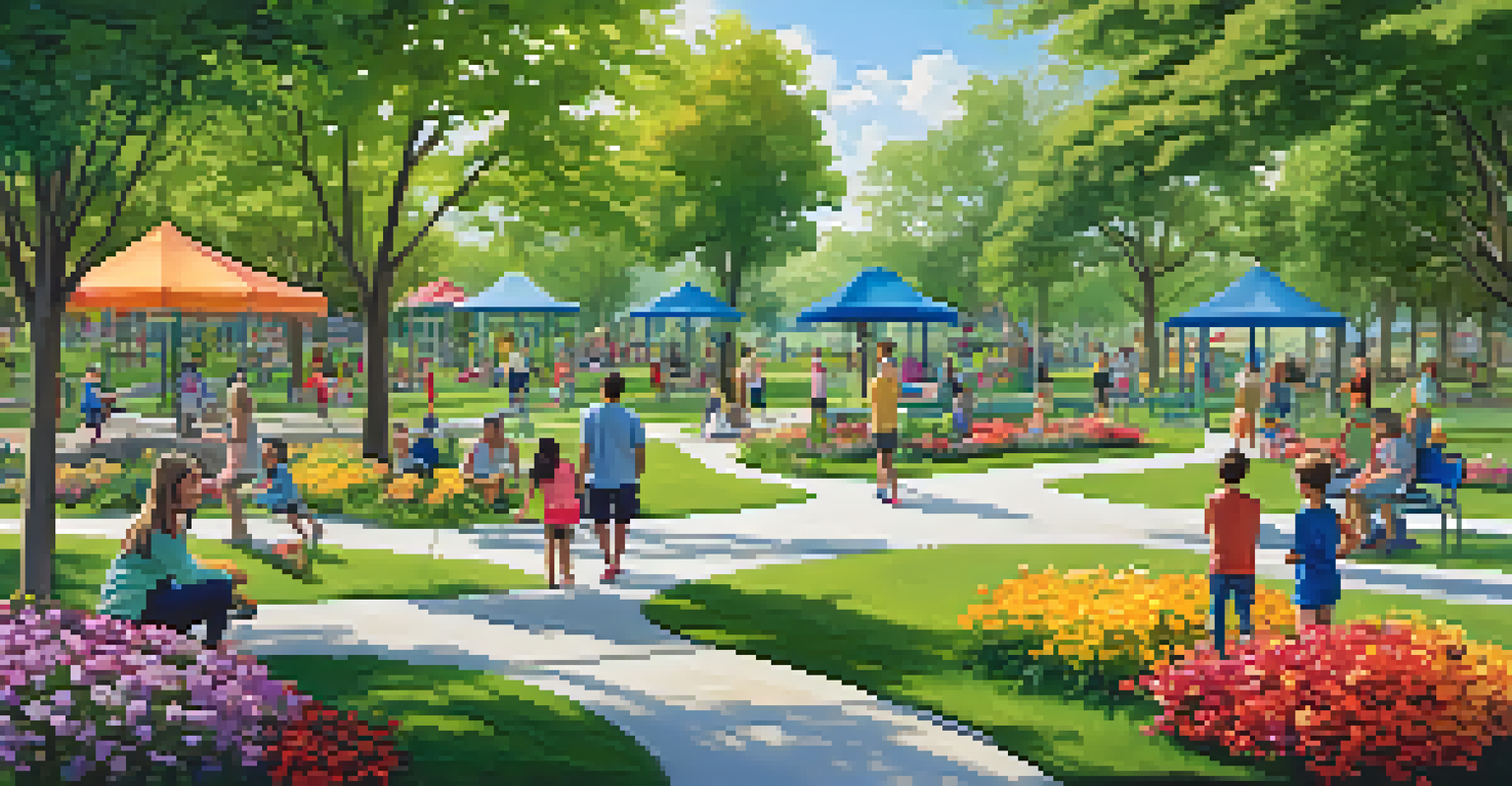The Rise of Suburban Living: Trends in Detroit Real Estate

Understanding the Shift: Why Suburban Living is Popular
Over the past few years, many families in Detroit have started moving to suburban areas. This shift is largely driven by a desire for more space and a quieter environment. As remote work becomes more common, the necessity of living close to the urban core has diminished for many.
Suburbia is where the masses escape, and a place where one can find space and tranquility, often lost in the hustle of urban life.
Suburban areas often offer larger homes with yards, which is particularly appealing to families with children or those looking to start a family. Additionally, the suburbs frequently feature lower crime rates and better schools, making them attractive options for those prioritizing safety and education.
The allure of suburban living isn't just about the homes; it’s also about lifestyle. Many suburbs have developed vibrant communities with parks, shops, and family-friendly activities, creating a sense of belonging that draws people in.
The Role of Remote Work in Suburban Migration
The COVID-19 pandemic has drastically changed how we work, with remote work becoming a permanent option for many. This flexibility allows individuals to live farther from their workplaces, resulting in a surge in suburban interest. Many Detroit residents are taking advantage of this newfound freedom to seek homes that fit their evolving lifestyle needs.

Remote work not only influences where people live but also how they view their homes. With more time spent at home, buyers are looking for spaces that accommodate both work and leisure, prompting a rise in demand for home offices and multi-functional areas.
Suburban Living Gains Popularity
Families are moving to suburbs for more space, lower crime rates, and better schools.
As a result, suburban real estate has seen a transformation, with developers focusing on creating homes that cater to this hybrid lifestyle. This trend is reshaping the market, as buyers prioritize comfort, functionality, and space.
Affordability: A Major Factor in Suburban Living Choices
Affordability is a significant driver behind the suburban trend in Detroit. Many potential homeowners are finding that they can get more bang for their buck outside the city. As property prices in urban areas continue to rise, the suburbs offer more attractive options for first-time buyers and families alike.
The suburbs are a place where families can truly thrive, balancing the comforts of home with community connections.
In addition to lower home prices, suburban areas often have lower property taxes and living costs. This financial relief can make a substantial difference in monthly budgets, allowing families to invest in their homes and communities.
For many, this affordability means they can secure larger homes with more amenities, such as yards and garages, which are often harder to find in urban environments. The prospect of living in a spacious home at a reasonable price is undeniably appealing.
Community Amenities: What Suburbs Offer Families
Suburban areas are increasingly focusing on developing amenities that cater to families. Parks, recreational facilities, and community centers are becoming staples in suburban planning, making these areas more appealing to prospective buyers. Families are drawn to neighborhoods with playgrounds, sports fields, and walking trails.
Another critical factor is the availability of good schools. Many suburbs are home to highly-rated school districts, which can significantly influence a family's decision to move. Parents often prioritize education when selecting a neighborhood, and suburbs frequently deliver on this front.
Remote Work Fuels Suburban Growth
The shift to remote work allows people to live farther from their jobs, increasing interest in suburban homes.
Moreover, the growth of local businesses in suburban areas has created vibrant shopping and dining scenes. The combination of community amenities and local services makes suburban living a convenient and attractive option for families.
The Impact of Urban Development on Suburban Growth
The urban development initiatives in Detroit have indirectly fueled suburban growth. As the city revitalizes itself, many residents are looking for a balance between urban access and suburban tranquility. New infrastructure projects and improved transportation links make commuting from the suburbs to the city more manageable.
This means that while some may choose to live in the city, many others are enticed by the prospect of having a suburban home while still being close enough to enjoy urban amenities. The accessibility of suburban living appeals to those who want the best of both worlds.
As Detroit continues to expand and develop, suburban areas may become increasingly integrated into the urban fabric, enhancing the appeal of living outside the city while staying connected to it.
Sustainability Trends in Suburban Developments
Sustainability is becoming an essential consideration in suburban real estate. Many developers are focusing on eco-friendly building practices and energy-efficient homes, aligning with the values of environmentally-conscious buyers. This trend is not only beneficial for the planet but also reduces long-term costs for homeowners.
Suburban communities are also prioritizing green spaces, with parks and community gardens becoming common features. These areas not only enhance the aesthetic appeal of neighborhoods but also promote a healthier lifestyle for residents.
Affordability Drives Suburban Choices
Many are choosing suburbs due to lower home prices and living costs compared to urban areas.
By incorporating sustainable practices, suburban developments are positioning themselves as attractive options for those looking to make environmentally responsible choices without sacrificing comfort or convenience.
Challenges Facing Suburban Growth in Detroit
Despite the many benefits of suburban living, there are challenges that come with this growth. One of the primary concerns is infrastructure; as populations increase, so does the demand for services like transportation, schools, and healthcare. Ensuring that these services can keep pace with growth is crucial for maintaining quality of life.
Another challenge is the potential for urban sprawl, which can lead to increased traffic congestion and environmental degradation. Striking a balance between development and preservation is key to fostering sustainable suburban communities.

Lastly, affordability in suburban areas can become an issue if demand continues to outpace supply. As more people move to these regions, maintaining reasonable housing costs will be a significant challenge for local governments and developers alike.
The Future of Suburban Living in Detroit
Looking ahead, the future of suburban living in Detroit appears promising. As more families prioritize space, safety, and community, the suburbs will likely continue to attract new residents. This trend aligns with the broader national movement towards suburbanization, making it a pivotal time for real estate in these areas.
Real estate developers are expected to adapt to these changing demands, creating diverse housing options that cater to different lifestyles and budgets. Innovations in housing design and community planning will play a significant role in shaping the suburban landscape.
Ultimately, the rise of suburban living reflects a shift in values and priorities among Detroit residents. As the city evolves, its suburbs are poised to become vibrant, dynamic communities that offer an appealing alternative to urban living.